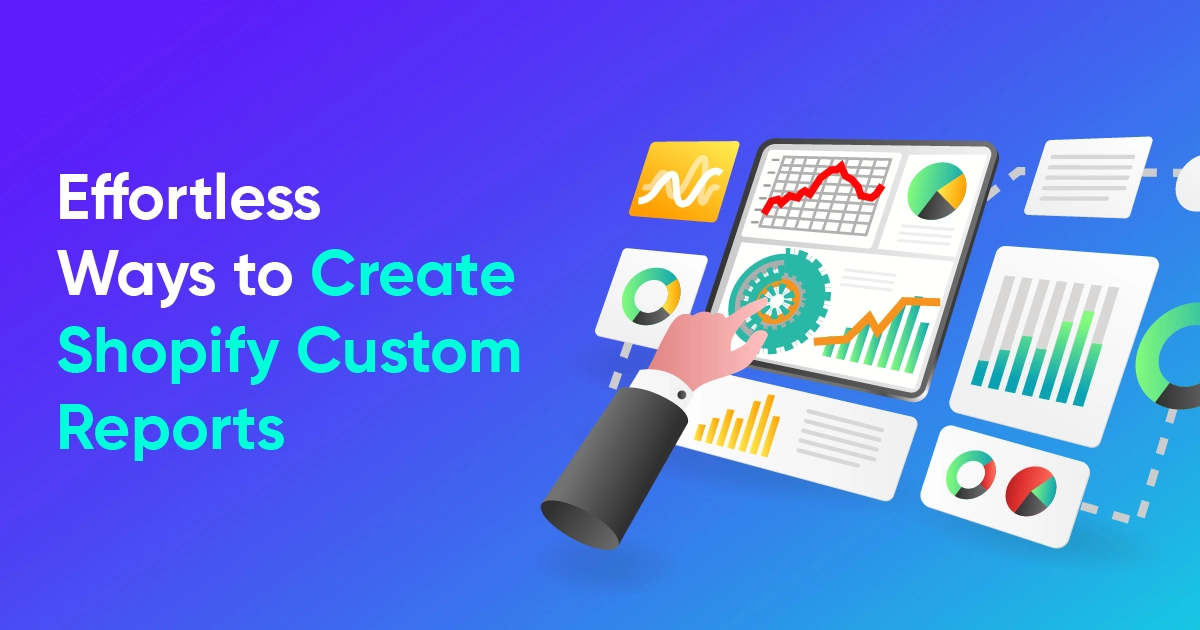Shopify Metafields Reports that work like magic for business

Shopify stores have standard fields for products, orders, and customers, but businesses often need to store extra details that are not captured in the default settings. Metafields lets store owners add specialized information like product specifications, order notes, or customer preferences for internal tracking and the customer experience.
But here’s a thing Native Reports omits metafields in its default reporting or product exports. That’s why using third-party apps from Shopify makes it easier to analyze this data with just a click.
Let’s break down how metafields work across different Shopify store elements and how you can improve reporting.
Why Metafields?
Metafields allows you to add custom data beyond what Shopify’s standard admin provides. These fields help store extra product details, ease internal report flow, and improve customer experience by displaying relevant information that enhances the shopping experience.
For example:
- A fashion brand might track product launch dates or color swatches.
- Metafields can be added across different Shopify elements, including orders, products, variants, customers, collections, draft orders, and locations. Let’s explore each category.
1. Product Metafields: Storing Product-Specific Data
Shopify provides default fields like title, description, and price, but sometimes that’s insufficient. Product Metafields help store owners manage additional details like:
- List of ingredients for food or skincare products.
- Related products to improve cross-selling opportunities.
With metafields, all this information stays in one place, making it easier for store owners and staff to access product specifications without searching through multiple systems.
2. Variants: Managing Product Differences
Some products come in different variations, like size, color, or material. This category lets store owners add specific details for each variant. For example:
A shoe store can track heel height for each size.
A tech store can store battery life details for different phone models.
These details improve internal tracking and help customers make better purchase decisions.
3. Orders: Adding Internal and Customer-Facing Data
Metafields for orders help store owners store additional order-related details, such as:
Gift messages added by customers.
Custom order notes for special requests.
Delivery preferences like "leave at the door" instructions.
You can use this data internally or display it on invoices or confirmation emails.
4. Customers: Tracking Customer Preferences
Shopify stores collect basic customer information, but Metafields helps store owners personalize the experience further. These Metafields can store:
- VIP status for loyalty programs.
- Last purchase details to improve customer service interactions.
For example, a bakery might store a customer’s favorite cake flavor, making it easier to suggest personalized birthday and celebration offers. Which leads to better business management.
5. Collections: Organizing Storefronts with Custom Tags
This category helps store owners group products, but Metafields takes it a step further by adding:
- Seasonal tags (e.g., "Winter Collection 2025").
- Discount eligibility for special sales.
Filtering products with meta fields in Shopify admin makes organizing and managing inventory easier.
6. Draft Orders: Handling Special Requests
Metafields for draft orders help store owners manage custom quotes, bulk pricing details, and special discounts before finalizing an order.
For example, a furniture store can use draft order Metafields to track:
- Assembly service preferences.
- Delivery date commitments.
These fields make it easier to track and process custom orders efficiently.
7. Locations: Managing Multiple Storefronts
For businesses with multiple locations, Metafields help track:
- Stock availability at different warehouses.
- Pickup time slots for local orders.
A restaurant can use metafields to store opening hours for different branches, ensuring customers see accurate information.
Why Shopify Store Owners Need Metafield Reports
Despite the power of meta fields, Native Reports doesn’t include them in its standard reports. This means you can’t easily export or analyze metafield data without a third-party tool.
So, third-party tools simplify this process by allowing store owners to generate reports that include additional custom information specific to orders, products, customers, etc. With this report, you can:
- Automate metafield reporting instead of manually extracting data.
- Customize reports to include only the metafields they need.
- Analyze future events and customer preferences more efficiently.
Shopify store owners can easily manage Metafields directly from the Shopify admin by going to Settings > Custom Data and selecting the relevant fields. Alternatively, they can use apps to add and customize metafields as needed. That’s it.
Conclusion-
Metafields gives Shopify store owners greater control over their data, helping them store, organize, and display specialized information. Whether tracking product specifications, managing custom orders, or improving customer interactions, Metafields unlock new possibilities for store operations.
However, since Native Reports omits Metafields in its built-in reports, custom reporting apps offer an easy way to access, analyze, and automate Metafield data. Whether running a small online store or a large e-commerce business, Metafield reports help you improve your store operations.
Want to explore how Metafields can improve your Shopify store? Start organizing your data today!

Build and automate your Shopify Reporting
Unlock the full potential of your Shopify store with Report Pundit. Gain access to over 2000 data fields, automate reports, and make data-backed decisions to grow your business.

.svg)
.svg)
.svg)



.webp)
.webp)














